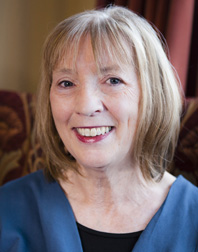It’s Never Too Late: Healing Prebirth and Birth at Any Age – A Reflection...
Early in the writing of the first draft of It’s Never Too Late: Healing Prebirth and Birth At Any Age, I discovered there were steps, especially in the embryo’s story, that even after studying, I had difficulty envisioning. At the time I wondered, could I leave these hard to reach, yet essential steps out of my written examination? Would anyone besides experienced embryologists and biodynamic craniosacral therapy teachers notice? It didn’t take long to come clean with myself, that if I skipped intricate steps in my understanding, I would only further reinforce what was at the root of my amnesia, and that in order to be whole myself, I had to find out what was going on.
Stoic Reflection
The Meditations of Marcus Aurelius have provided inspiration, comfort, and counsel to intrepid readers for approximately two millennia. Having read through it yet again (for at least the twentieth time), I found myself puzzled by the fact that I had never undertaken a similar exercise. Keeping a journal of my thoughts about the vicissitudes of the human condition, and my struggle to understand its challenges, had not become a habit. Marcus, as far as we know, never intended to have his ruminations published. Those thoughts were not meant for the world at large. He simply kept a journal for his own use, for his own efforts at self-rectification and self-governance. The original title was To Himself, and the book in which he recorded his thoughts was not, to our knowledge, shared with family, friends, or staff. The last great Roman Emperor thought a great deal about the nature of the good life, the nature of virtue, the temptations to vice and weakness, and his own insignificance by comparison to the vast Cosmos and the power of the all-pervading, governing Logos (the organizing principle of the natural world).
The Neuroscience of Human Relationships: An Interview with Louis Cozolino, PhD
Scanning the book list for a doctoral class several years ago, I noted the title, The Neuroscience of Psychotherapy, by Louis Cozolino, PhD. I felt intimated—it sounded intense, dense. Then I opened the book. Lou’s ability to impart scientific data within a user-friendly framework wooed me. As a reader, I have a tendency to develop a vision of the author responsible for the text. From Lou’s voice—his presence on the page— I sensed he was serious, focused, and highly intelligent with a technical vocabulary easily accessed but not necessarily his first choice. I read with a sincere interest in the content, a desire to learn and understand the concepts, and to get a feel for their application in a therapeutic setting.
The Mother-Infant Interaction Picture Book: Origins of Attachment
“Face-to-face communication is very fast, both in adults and mothers and infants,” Beebe says. “When we watch people interacting in real time, we often do not see subtle aspects of the interaction. When we slow it down, and view it second by second, or by fractions of seconds, we see a new subterranean world of the details of interactions. Viewing the film frame-by-frame is like having a social microscope. You can see how each person affects the other, moment by moment. You can see who acted first- did the infant turn his head away first, and then the mother moved her head in close, looming in? Or did the mother loom in first, and then the infant turned his head away?” .
The Body Remembers Volume 2: Revolutionizing Trauma Treatment
In her new book, The Body Remembers Volume 2: Revolutionizing Trauma Treatment, Babette Rothschild includes what she calls a new ‘tool’, which is, in effect, a table and chart that identify the autonomic nervous system (ANS) and the effects of ANS arousal in the therapeutic setting. It is designed to help therapists better monitor, evaluate, and regulate client ANS arousal states thus making trauma treatment safer through observation and modulation.
The information as graphically depicted in this book represents what I call a ‘map’. Babette and I have been colleagues for many years in the same professional field, and we share a common passion—we like making maps. Furthermore, we like to keep working with them until they have reached a level of precision that is helpful not only to ourselves but also to other trained trauma therapists – and to clients.
Clinical Applications of the Polyvagal Theory: A Reflection
If Stephen Porges asked you to co-edit a book with him, what would you say? With my passion for Polyvagal Theory, my love of writing, and my friendship with Steve, my answer was an unhesitating “yes.” The process of bringing this co-edited book to publication has been a shared ventral vagal inspired adventure.
In Clinical Applications of the Polyvagal Theory, Steve’s intention was to gather a group of clinicians whose work was informed by Polyvagal Theory. Although the beginning chapters are written by recognized leaders in the field of trauma, this book came out of Steve’s commitment to ask people who were emerging as leaders to write chapters. Steve wanted this edited collection to feature clinicians who were in the trenches creatively bringing Polyvagal Theory into their work every day with complicated clients. As he traveled and gave presentations, Steve would talk with people who were incorporating a foundation of Polyvagal Theory in innovative ways and invite them to be a part of our book project. We began calling our chapter contributors our “Polyvagal family”, and each time Steve emailed me to introduce a new potential author, he said, “Here’s another member of our family.” I came to know our chapter contributors through emails, phone calls, and Skype conversations. It was a sweet experience of autonomic attunement and the ease of connection that brings, in these beginning Polyvagal partnerships.
This edited collection was a labor of love and a delicate process of helping our contributors incorporate the language of Polyvagal Theory.
The Sacred Path of the Therapist: An Author’s Reflection
There was a time when I couldn’t imagine how to integrate my spiritual path and my Western training as a psychotherapist. I was traveling down to Peru periodically over a 10-year period, stepping into the mystical non-ordinary world of the shaman, while working as a clinical supervisor in a psychiatric hospital. I felt hurled down to South America, as if literally picked up and thrown down there by the circumstances and synchronicities in my life. I knew I had a choice, but not really. Destiny was calling to a tradition so foreign from my upbringing, but it activated a deep knowing and memory of ancient wisdom and truth.
My first book, Eyes of the Jaguar, was about the beginning of this mystical journey. I didn’t consider myself to be a writer and felt as if this book wrote itself through me. The words of the book refused to stop moving through my thoughts until I put them down on paper. It felt as if it was part of my spiritual initiation process, with a life of its own and an impact that I could not have known.
I believed strongly in a holistic interrelated paradigm of body/mind/spirit, as taught in the shamanic tradition. I meditated on how to integrate it all, and the inner wisdom of my soul whispered back, “It will integrate.” I learned to trust my inner guidance, and as time went on, I was able to see the integration within myself. As the therapist and the shaman became one within me, my work became more integrated.
Meditating with Character
I've learned about the simple bliss of making contact with my experience through meditation and character structure. My 'heady' part can now more easily dissolve into the ease of just sensing the softening of the scalp. In fleeting flashes, there is no me or mine in the way I conceive of me or mine in my every day mind. There's just this body, sitting and noticing sensations arise and fall, nothing to do, nowhere to go. A sigh on the out breath as my shoulders drop a few millimeters and I soften into the earth.
Researching and Writing Embodied Social Justice
For much of my professional life, I have been fortunate to do work that I love; work that is profoundly meaningful to me, and that I consider to be “who I am” as much as it is “what I do”. Early in my career, that professional identity centered on being a somatic psychotherapy practitioner. Like many of the readers of Somatic Psychotherapy Today, my life has been enriched and forever transformed by my own experiences as a somatic psychotherapy client. As a therapist, I understood my clinical work as not just potentially “life-changing” for my clients, but “culture-changing” as well. I lived and breathed the work, and brought a somatic perspective to my whole life – how I moved, how I interacted with others, and how I understood the world.
Later in my professional life, I had the opportunity to broaden my focus to include teaching somatic psychotherapy graduate students and conducting research into the various ways a somatic perspective might inform a range of topics – for example, working with trauma survivors, integrating somatics and the expressive arts, and transforming the process of teaching and learning. So now when people ask me what I do for a living, I am much more likely to describe myself as a somatic scholar/activist than a somatic psychotherapist. This shift in professional identity is important in understanding how and why I came to write Embodied Social Justice, because like my previous books (Elemental Movement, 2000; Knowing in our Bones, 2011), this book is based on original research. Although I have tried to write it in a way that engages and inspires readers, at its heart it is research document.
Nutrition Essentials for Mental Health
As a somatic psychotherapist, I have always integrated several body and mind methods into my clinical work and personal self-care. This set the stage for my career and passion to understand the role of culture in food, nutrition and well-being, all of which I explore in-depth in my new book, Nutrition Essentials for Mental Health.














